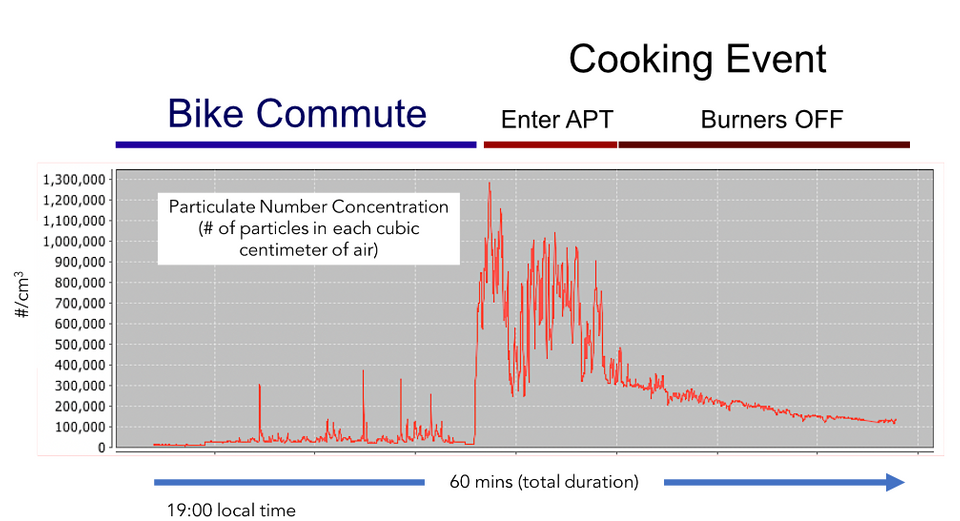Microenvironment #1 - Cooking chili on a gas-stove

Welcome to the first post in our #guessthatmicroenvironment series! The goal of this series is to improve our collective understanding of how our daily actions and interactions influence the air that we breathe.
The first clue went up April 10th:
#guessthatmicroenvironment is back! We'll aim to post new ones every Friday morning -
— QuantAQ (@quant_aq) April 10, 2020
* Data details: # counts of the super tiny particles (10-300 nm in diameter), cm3 is ~ volume occupied by the tip of your pinkie finger
* Guess away! pic.twitter.com/VRK38YJiIB
Cooking chili on a gas-stove
Due to current coronavirus-driven lockdowns, we are all spending a lot of time indoors these days. This week, we posted a microenvironment that highlights the profound differences in air quality that can occur between indoor and outdoor environments.
About the data
The data was collected using a DiSCmini - an electrometer used to measure particles between 10-300 nm. Data were collected for a period of 60 minutes and are shown in the figure below with the time elapsed on the x-axis and the total particle number concentration (particles per unit volume of air) on the y-axis.

The first thirty minutes show a bike commute between Cambridge, MA and Somerville, MA for reference. Commuting was done via secondary roadways alongside mostly gasoline-vehicle traffic with many stop lights at the tail-end of rush-hour. This section of the data - shown for reference - contains a few transient peaks (> 200,000 particles per cm3) which correspond to encounters with a biodiesel bus and a few medium-duty diesel vehicles along the road. The peaks each persist for around 10-20 seconds while in close proximity to the source.
At around thirty minutes into the time-series, the instrument entered a 650 ft2 apartment and immediately encountered a cloud of more than 1M particles/cc. Dinner was being prepared! Two of the four gas burners were turned on - one frying ingredients and the other simmering a pot of chili. The frying activity (high temperature oil) was the most likely culprit for generating the high concentrations of particles observed. The gas burners themselves were also likely generating small particulates from the incomplete combustion of the natural gas. The small apartment did not have any active ventilation and windows were all closed (it was February in the Northeast US). This highlights the role that dilution (or lack of dilution) can play in dictating our exposure to air pollution. Even 20 minutes after the burners had been turned off, the residual concentration of particles indoors were still 10-100x higher than the outdoor concentrations observed during the bike commute home.
About guess that microenvironment
The goal of this series is to help improve our air intuition by telling stories through air quality data. Ultimately, this series will serve as a resource for people to develop a sixth sense for detecting and avoiding air pollution in their daily lives.


